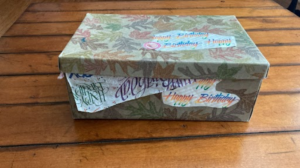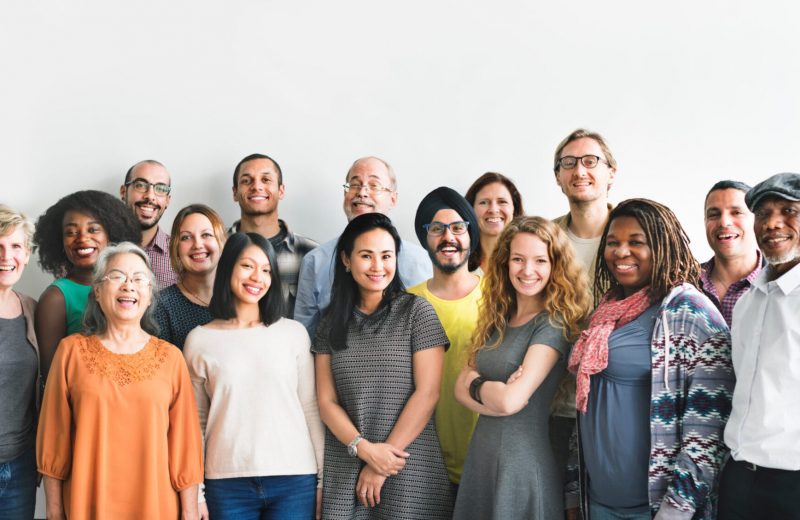The Many Kinds of Rituals
Many of us are likely familiar with different rituals as it relates to spiritual and religious practices (e.g., daily prayers, meditation, fasting) or well-being (e.g., drinking water first thing in the morning, journaling, or weekend meal prep). You’ve likely also seen rituals as part of family life (e.g., Sunday lunch at grandma’s, annual family reunions, or Friday movie night at home).
These kinds of rituals bring utility to our lives through enhanced well-being and strengthened relationships, serving as powerful tools to bring about connection, joy, and clarity on what matters to us most.
But today, I want to focus on rituals in the team context. Similar in purpose to spiritual, personal, and familial rituals, team rituals are activities that are:
- Intentional (done with a specific purpose because it benefits the team)
- Structured (Because everyone knows how it will happen, they can focus on the meaning rather than the action.)
- Predictable (People know when it will happen so they can engage appropriately.)
These shared experiences have the power to align your team, create a stronger sense of belonging, and shape the culture across all levels of an organization.
Functions of Rituals
Rituals are more than just repeated behaviors; they serve critical functions within our teams, such as:
- Exchanging information – examples: Weekly team meetings or daily morning stand-ups.
- Creating space for problem-solving, creativity, or processing information together – examples: Regular brainstorming sessions to solve business challenges, pre-mortem reviews to anticipate possible challenges, or post-mortem reviews to learn from projects.
- Making decisions – examples: Following specific steps to reach consensus, holding quarterly voting sessions.
- Building relationships and connections – examples: Team lunches, offsite retreats, or work anniversary celebrations. You can also embed rituals within rituals, such as dedicating time in a meeting to get to know each other as humans.
- Reinforcing desired behaviors and shaping culture – example: At ITONICS, a company dedicated to innovation management, they have a monthly “Friday F*ck Up Stories,” where anyone can share “mistakes” (aka “investments in their learning”) that they have made in the past month and what they’ve learned from it. This reinforces the behaviors and values of personal reflection, accountability, shared learning, vulnerability, and teamwork.
Bouncing back to my family’s Birthday Box, it plays multiple functions in our family’s culture: It reinforces our shared values of minimalism and responsible consumerism. It recalls happy memories of birthdays past, amplifying the joy of this birthday. It provides a sense of stability and longevity because this box has moved states, cities, and homes with the family, and it’s used across all generations of our family. Lastly, the Birthday Box ritual has the power to include. I remember the unspoken thrill when I first received a gift in the Birthday Box before my husband and I had gotten married. I was thrilled because it signaled to me that they could see me as part of the family.
Designing a Ritual
It’s critical to craft team rituals with intentionality and purpose. Remember our definition of team rituals? They should always be intentional, predictable, and structured. Their design and execution should never be left to chance or disconnected from the felt needs and goals of the team. And while a certain level of creativity is always welcome, it’s imperative that we take care not to let creativity overtake utility, meaning-making, and purpose.
Imagine with me: You’re orchestrating a yearly team off-site. Ideas start to bubble up—you personally love exercises that involve physical movement, energy, bonding, and a hint of discomfort to crack open the door to new possibilities. Suddenly, a vision crystallizes: a surprise trip to a remote location where the team will engage in their first-ever tug-of-war showdown—management versus individual contributors.
You can already picture it—an unforgettable experience with the executive team and their direct reports tussling in a muddy country field, clutching Home Depot’s finest 3-strand Manila rope, letting out impassioned war cries while risking potential back and knee strain, all in the name of team building…
Sound familiar? Don’t start designing those “2024 Tug-N-Tussle” commemorative t-shirts just yet!
Creating meaningful rituals requires thoughtful planning and a deep understanding of your team’s dynamics. It’s a balancing act that involves striking the right tone between fun and function, comfort and appropriate vulnerability. A simple yet effective approach to designing team rituals is to consider the 5 Ws (plus an H):
Why: Why do this? Is it meant to enhance communication, boost morale, or foster creativity? All your answers to the succeeding questions hinge on this ‘why.’
Who: Who will be involved in the ritual? Will it be the entire team, or are there specific roles for individual members? Consider inclusivity and how to make everyone feel valued and part of the ritual.
What: What is the high-level concept of the ritual? Is it a celebration, a brainstorming session, or a feedback roundtable?
How: Detail the specific steps involved. If it’s a celebration, what activities will take place? If it’s a meeting, who will lead it and what will be the structure? Provide a clear framework to help your team understand the flow of the ritual.
When: When will the ritual take place? It can be based on a time of day (e.g., a daily morning huddle) or year. Or it can be based on an event, such as a new team member joining.
Where: Our environments can affect our behaviors. Will your ritual take place in the usual meeting room, a unique office space, or somewhere else? Think about how different settings might shape participants’ behaviors—how might a formal boardroom versus a relaxed park setting influence their participation?
Examples of Team Rituals
The possibilities for team rituals are bound only by your imagination! To get those creative ideas flowing, here are some examples of effective rituals I’ve seen used in organizations:
- First Day Breakfast Club: On the first day of every month, invite all new hires to a special breakfast meeting where they get a chance to introduce themselves and meet people from across the company. This ritual could ease newcomers’ nerves, foster cross-departmental relationships, and help individuals integrate into the company culture more effectively.
- Town Hall Surprise: During regular town hall meetings, have a surprise element that changes every time. This could be a performance by an employee’s band, a trivia contest, a guest speaker from outside the company, or even a surprise snack delivery. This ritual not only keeps meetings engaging, but depending on how it’s done, it can reinforce your organizational values of creativity, fun at work, or celebrating the humanness of your people.
- Work Anniversary Time Capsule: Encourage employees to write a letter to their future selves on their work anniversaries, highlighting their achievements, challenges, and hopes for the next year. Collect these letters and return them a year later. This ritual fosters self-reflection and provides a tangible reminder of personal growth and development.
- Walking One-on-Ones: Instead of typical office meetings, encourage managers to hold walking one-on-one meetings. Not only does this get people moving and out of the office environment, but it can also lead to more relaxed and open conversations. This ritual can promote well-being and open communication.
- Empty Chair Meetings: In all meetings, leave one chair empty. This chair represents the voice of the customer or client. When making decisions or discussing projects, anyone can invoke the “voice” of the empty chair, which serves as a reminder to consider the customer’s perspective. This ritual can help keep the team focused on user needs and enhance decision-making.
- Quarterly Organization-wide Reflection: Drawing inspiration from the Jewish tradition of Shabbat, a day of rest and reflection, the CRM consulting company OpenTent steps out of its day-to-day flow to close the quarter on a note of reflection. They share achievements and learnings from the past quarter, express gratitude, and set intentions for the next quarter.
- Paired Learning: Also, at OpenTent, employees are paired up during internal workshops and meetings to digest what they have just heard or experienced, inspired by Chavruta, which is the intense study of Jewish texts in pairs.
- Intentional Project Kick-offs and Wind Downs: At BOxD, before we start work on any client project, we get together as a team and discuss what strengths each of us brings to the table, any unhelpful behaviors we each may engage in, and how we’d want our teammates to call our attention and support us if these unhelpful behaviors show up. At the end of the project, we have a structured discussion on how we showed up as a team, how we each contributed to the project outcome, what we learned about the client, and, just as importantly, what we learned about ourselves. We do this because a core value at BOxD is constant improvement. In facilitating these bookend rituals, we are holding ourselves accountable for delivering an exceptional project for our clients and are also actively supporting each other’s professional and personal growth.
- Go B.I.G.: At Buckingham Wealth Partners, many Team Leaders begin their meetings by facilitating an icebreaker called Go B.I.G. (Begin In Gratitude). Each teammate shares one thing they are grateful for with the rest of the team at the beginning of the call. This helps break the ice, start the call on a positive note, and primes everyone for active participation.
Misconceptions about Team Rituals
There are a couple pitfalls we want you to avoid as you consider how to use rituals in your team. Keep these things in mind as you explore what might be best for your team:
- Rituals ≠ Meetings. While many team rituals may take the form of gatherings, their format can be much more diverse and creative. I highlighted a few examples above, but here are two more:
- Elephant on the Table: Have a small elephant figurine available in the conference room. Any team member can place it on the table when they feel there’s an important issue or ‘elephant in the room’ that isn’t being addressed. This ritual creates a safe, non-confrontational way to highlight uncomfortable topics and promote open and honest communication.
- Random Acts of Kindness Day: Declare a particular day each month or quarter as a ‘Random Acts of Kindness’ day. On this day, team members are encouraged to perform small, thoughtful acts for their colleagues, such as leaving a supportive note, bringing them a coffee, or offering help with a task. This ritual can promote empathy and strengthen bonds among the team.
- Rituals should change as your people change. Rituals should evolve to meet the changing needs of teams. A team that is just starting its journey together has different needs from one that has worked together for 10 years and is now focused on new goals. An organization of 100 people will require different rituals when they have grown to 1,000, where communication becomes more complex, roles become specialized and people no longer know each other by face and name.
By intentionally designing and implementing team rituals, you can foster a sense of belonging, improve communication, and drive success. Don’t underestimate the impact of a well-designed ritual!

















